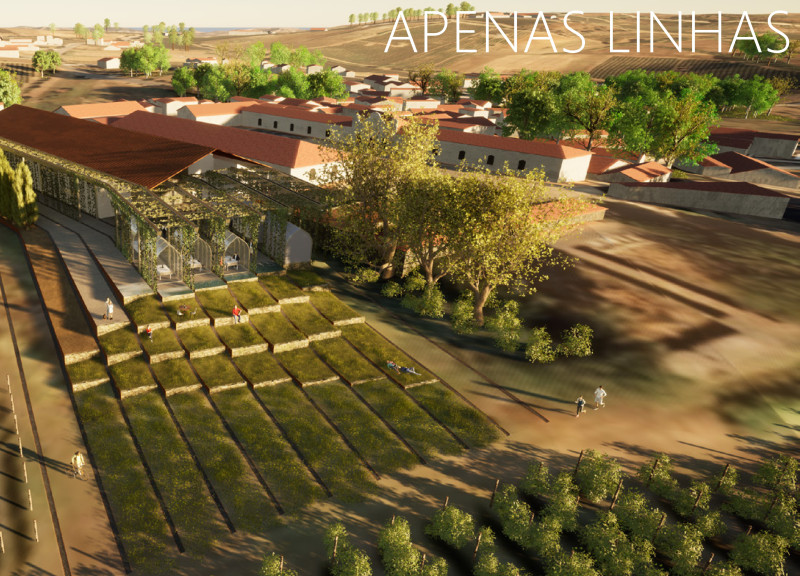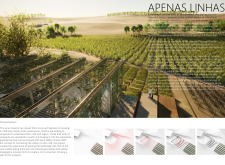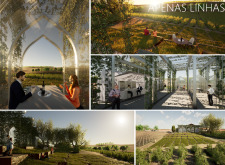5 key facts about this project
The design features a tasting terrace known as "Apenas Linhas," located within a vineyard setting. It reflects a move in the wine industry from traditional architectural forms to a focus on experiences that engage visitors. The goal is to deepen the understanding of wine-making while fostering a strong connection to the land where the grapes are grown.
Integration with Landscape
The concept for Apenas Linhas draws inspiration from the natural lines and slopes of the vineyard. It establishes a close relationship between the physical structure and the agricultural land. The terraces function as interactive spaces, allowing visitors to engage directly with the vines. By emphasizing the principles of viticulture, the design enables a greater appreciation for the cultivation process and the elements that influence the wines produced.
Terrace Design and Structure
The tasting terrace extends from the vineyard, incorporating flexible greenhouse structures that serve multiple purposes. These spaces act as tasting rooms while also managing water runoff from the site. A "U" shaped beam connects to existing buildings, directing water effectively down to the terraces. This design choice highlights a commitment to sustainability, ensuring water is returned to the earth and supporting the vineyard's ecosystem.
Visitor Experience and Spatial Dynamics
The layout encourages different types of visitor interactions. Terraces include planters that sustain vines, creating shaded areas that enhance the tasting experience. Vertical trellises allow vines to grow upward, providing privacy in certain sections while maintaining an open feel in public areas. This design results in varied environments that cater to diverse experiences, from quiet moments of reflection to lively social gatherings.
Natural Flow and Movement
Paths throughout the project promote an effortless movement through the landscape. Visitors can easily transition from formal tasting activities to more casual experiences, encouraging spontaneous interactions with the vineyard. Elevated viewpoints offer a chance to take in the rolling hills and natural beauty, emphasizing the relationship between the design and its surroundings.
Dramatic canopies create shaded areas while supporting vine growth, enriching the overall quality of the spaces. This thoughtful integration enhances both the architectural form and the environmental function, allowing the design to serve as a productive part of the vineyard ecosystem.






















































